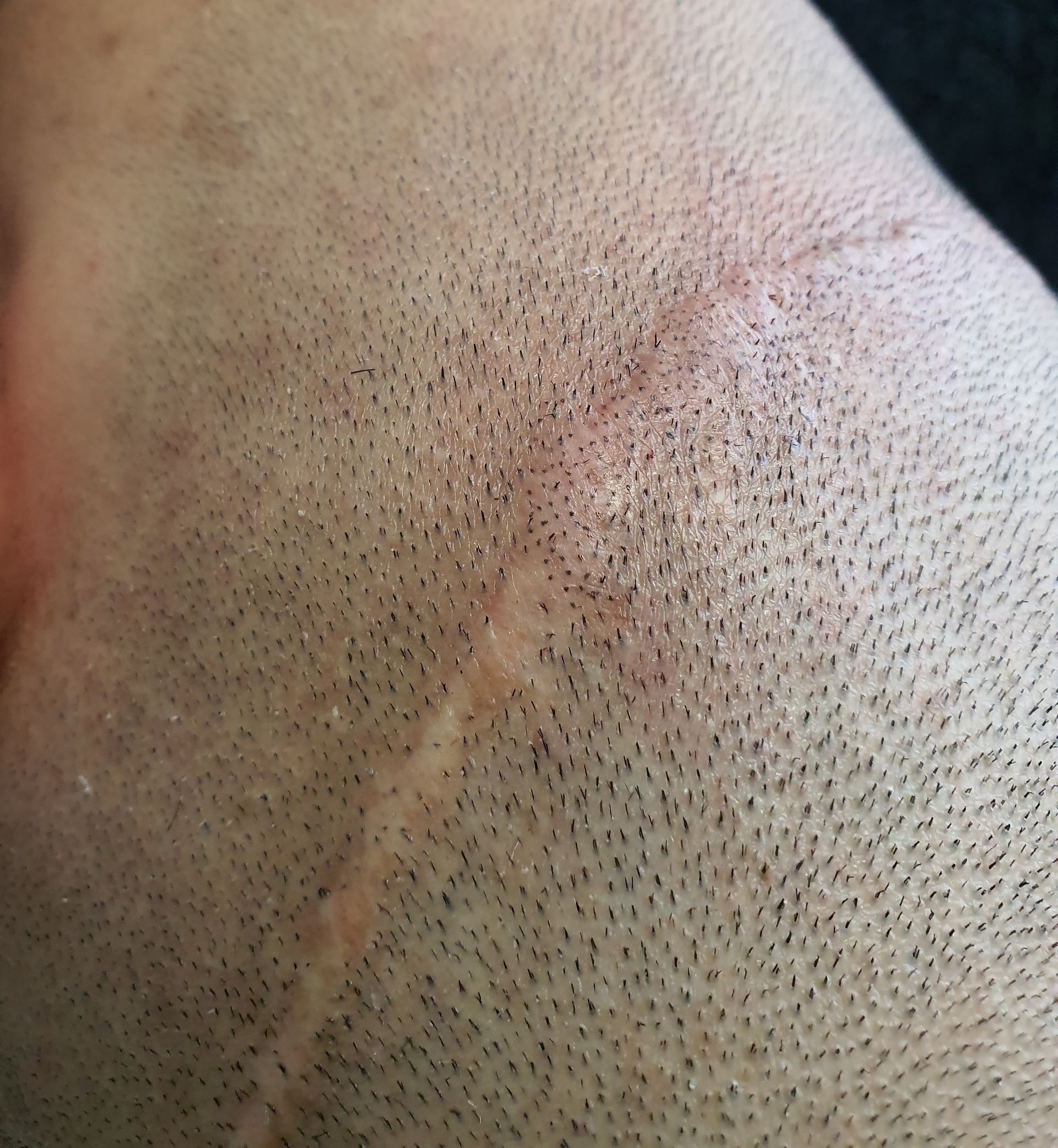Scalp Micropigmentation
Covering Scars with Scalp Micropigmentation SMP

Scalp Micropigmentation (SMP) is a popular method for covering scars, especially those resulting from hair transplant surgeries, injuries, or medical conditions. SMP involves depositing small amounts of pigment into the scalp to mimic the appearance of hair follicles. Here's an overview of how it works, its benefits, and considerations:
How Scalp Micropigmentation for Scar Coverage Works:
- Consultation: The process begins with a consultation with a trained SMP practitioner. During this session, the practitioner assesses the scar and discusses the desired outcome with the client.
- Pigment Selection: The practitioner selects pigments that match the client's hair color and skin tone to ensure a natural look.
- Preparation: The scalp and scar area are cleaned and, if necessary, shaved to create a smooth surface for the procedure.
- Application: Using a specialized SMP machine, the practitioner deposits tiny dots of pigment into the dermal layer of the skin around and on the scar. This creates the illusion of hair follicles and blends the scar with the surrounding scalp.
- Multiple Sessions: Typically, several sessions are needed to build up the desired density and ensure even coverage. Each session lasts a few hours, with a few weeks of healing time between sessions.
Benefits of Scalp Micropigmentation for Scars:
- Concealment: Effectively hides scars by blending them with the surrounding hair or scalp, making them less noticeable.
- Non-Surgical: Unlike other scar treatments, SMP is non-invasive and does not require surgery.
- Immediate Results: Visible improvements can be seen after the first session, with full results after completing all sessions.
- Long-Lasting: Results can last several years, though occasional touch-ups may be needed to maintain the look.
- Low Maintenance: SMP does not require special maintenance routines, making it a convenient option.
Considerations:
- Practitioner Expertise: The success of SMP largely depends on the skill and experience of the practitioner. It's crucial to choose a certified and experienced professional.
- Pigment Fading: Over time, the pigment may fade due to factors like sun exposure, skin type, and lifestyle. Periodic touch-ups can help maintain the results.
- Healing Time: Post-procedure care includes avoiding direct sunlight, heavy sweating, and certain hair products to ensure proper healing.
- Pain and Discomfort: Some clients may experience mild discomfort during the procedure, but it's generally well-tolerated. Topical anesthetics can be used to minimize pain.
- Allergic Reactions: Although rare, there is a possibility of allergic reactions to the pigment. A patch test can help determine if you're allergic to the pigment used.
Conclusion:
Scalp Micropigmentation is a highly effective method for covering scars on the scalp. With proper care and a skilled practitioner, it can provide natural-looking results that significantly improve the appearance of scarred areas. If you're considering SMP for scar coverage, ensure to research and consult with reputable professionals to achieve the best outcome.
To find out more and if we can cover up your transplant scars email us on info@luxemicro.com.au or call 0483 906 004
Luxe Micro Melbourne, Australia Team







